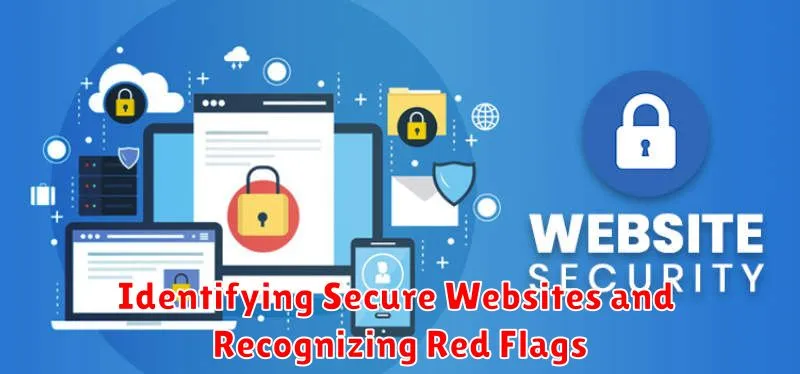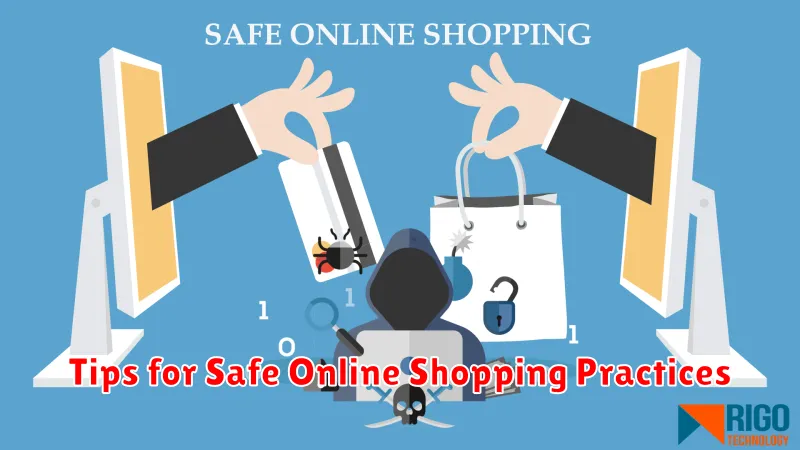Is online shopping safe? This is a critical question in today’s digital age, where e-commerce dominates the retail landscape. With the convenience of purchasing anything from groceries to electronics with a few clicks, it’s understandable why millions flock to online marketplaces. However, the rise in online shopping has also seen a corresponding increase in cyber threats and scams, making it essential to understand the potential risks and how to mitigate them. This guide will delve into the crucial aspects of secure online shopping, offering practical advice and actionable steps to ensure your safety and protect your financial information while enjoying the benefits of e-commerce.
Navigating the world of online shopping safely requires vigilance and awareness. This guide, “Is Online Shopping Safe? A Guide to Secure E-Commerce,” will equip you with the knowledge to make informed decisions and confidently engage in online transactions. From verifying website authenticity and understanding secure payment gateways to recognizing phishing attempts and protecting your personal data, we’ll cover the essential elements of safe and secure e-commerce practices. Learn how to identify red flags, protect yourself from fraud, and enjoy the convenience of online shopping without compromising your security.
Understanding Common Online Shopping Threats
While online shopping offers convenience, it’s crucial to be aware of potential threats. Phishing attacks attempt to steal your login credentials and financial information through deceptive emails or websites mimicking legitimate businesses. Be wary of unsolicited emails requesting personal information.
Malware can infect your devices through malicious links or downloads, compromising your data. Ensure your antivirus software is up-to-date and avoid clicking on suspicious links. Fake online stores often offer incredibly low prices to lure unsuspecting shoppers. Verify the website’s legitimacy by checking for secure connections (HTTPS) and researching company reviews.
Credit card fraud remains a significant concern. Never share your credit card details on unsecured websites. Monitor your bank statements regularly for unauthorized transactions.
Secure Payment Gateways and Encryption
Secure payment gateways act as intermediaries between you, the merchant, and the payment processor. They encrypt sensitive data, like your credit card number and expiration date, ensuring it’s transmitted securely over the internet. This encryption process transforms readable information into an unreadable format, protecting it from unauthorized access.
Look for indicators of secure payment gateways, such as the padlock icon in your browser’s address bar and the “https” prefix in the website address. The “s” stands for secure and indicates that the website uses SSL (Secure Sockets Layer) or TLS (Transport Layer Security) encryption.
Encryption is a fundamental technology used in secure online transactions. It safeguards your data by scrambling it into an unreadable format. Only the authorized recipient, with the correct decryption key, can access the original information. This process prevents hackers from intercepting and stealing your financial and personal details.
Protecting Your Personal Information
Protecting your personal information while shopping online is crucial. Never share sensitive data like your Social Security number, driver’s license number, or bank account details unless absolutely necessary for a purchase and you are confident in the website’s security.
Create strong passwords for your online shopping accounts. Use a combination of uppercase and lowercase letters, numbers, and symbols. Avoid using easily guessed passwords like “password123.” Consider using a password manager to securely store and manage your various passwords.
Be cautious of phishing emails and texts. Legitimate businesses rarely ask for personal information via email or text. If you receive a suspicious message, don’t click on any links and contact the company directly to verify its authenticity.
Regularly review your credit card and bank statements for unauthorized charges. Report any discrepancies immediately to your financial institution. Consider setting up account alerts to notify you of any suspicious activity.
Identifying Secure Websites and Recognizing Red Flags

One crucial aspect of safe online shopping is verifying website security. Always look for “https” in the address bar. The “s” indicates a secure connection, meaning data transmitted between your browser and the website is encrypted. Look for a padlock icon next to the address bar, which also signifies a secure connection. Click on the padlock to view the website’s security certificate for further verification.
Be wary of websites with misspellings, grammatical errors, or unprofessional design. These can be indicators of fraudulent sites. Check the website’s contact information. A legitimate business will provide clear contact details, such as an email address, phone number, and physical address.
Be cautious of deals that seem too good to be true. Unrealistic discounts can be a lure to attract unsuspecting shoppers to fraudulent websites. Research the website’s reputation. Look for reviews and ratings from other customers to gauge their experience and identify potential issues.
Tips for Safe Online Shopping Practices

Practicing safe online shopping habits is crucial for protecting yourself from fraud and other risks. Use strong passwords, unique to each online account, and enable two-factor authentication whenever possible. This adds an extra layer of security.
Be cautious of public Wi-Fi. Avoid making purchases on unsecured networks. If you must shop while using public Wi-Fi, consider using a Virtual Private Network (VPN) for added security.
Regularly monitor your bank and credit card statements for any unauthorized transactions. Report any suspicious activity immediately to your financial institution.
Keep your software updated. Ensure your operating system, web browser, and antivirus software are up-to-date with the latest security patches. These updates often include important security fixes that help protect you from online threats.
Research retailers before purchasing. Look for established retailers with positive customer reviews. Verify their contact information and return policies before making a purchase.
The Role of Two-Factor Authentication
Two-factor authentication (2FA) adds a crucial layer of security to your online shopping experience. It goes beyond simply entering your username and password, requiring a second form of verification to confirm your identity.
This second factor typically comes in a few forms. It could be a unique code sent to your phone via text message or generated by an authenticator app. Alternatively, it could be a biometric verification like a fingerprint scan or facial recognition.
By requiring two distinct factors, 2FA makes it significantly more difficult for unauthorized individuals to access your accounts, even if they manage to obtain your password. This is because they would also need access to your phone, authenticator app, or biometric data.
Enabling 2FA is highly recommended for all online accounts, especially those involving financial transactions like online shopping. It’s a simple yet powerful step you can take to protect yourself from fraud and unauthorized access.
Dealing with Suspicious Emails and Phishing Attempts
Phishing attempts are a common tactic used by cybercriminals to steal personal information. These attacks often come in the form of deceptive emails, disguised as legitimate communications from banks, online retailers, or other trusted sources. Be wary of any email that asks for personal information such as usernames, passwords, credit card numbers, or social security numbers. Legitimate organizations rarely request this information via email.
Check the sender’s email address carefully. Phishing emails often use addresses that look similar to legitimate ones, but with slight variations. Hover your mouse over the sender’s name to reveal the full email address. Look for misspellings, unusual characters, or domain names that don’t match the supposed sender.
Avoid clicking on links within suspicious emails. Instead, navigate directly to the organization’s website by typing the address into your browser. If you suspect an email is a phishing attempt, report it to the organization it impersonates and to your email provider.
Staying Informed About the Latest Security Measures
In the ever-evolving landscape of online security, staying informed is paramount. Cybersecurity threats are constantly adapting, and new vulnerabilities emerge regularly. Consumers must remain vigilant and proactive in educating themselves about the latest security measures.
A key aspect of staying informed involves keeping your software updated. This includes operating systems, web browsers, and antivirus programs. Updates often contain critical security patches that address known vulnerabilities, protecting your devices from exploitation.
Following reputable security blogs and news outlets is another valuable strategy. These sources provide up-to-date information on emerging threats, data breaches, and recommended security practices. They can offer practical advice and insights into safeguarding your online activities.
Finally, be wary of social engineering tactics. Criminals often employ deceptive methods, like phishing emails or fraudulent phone calls, to trick individuals into revealing sensitive information. Staying aware of these tactics can help you avoid falling victim to such scams.

